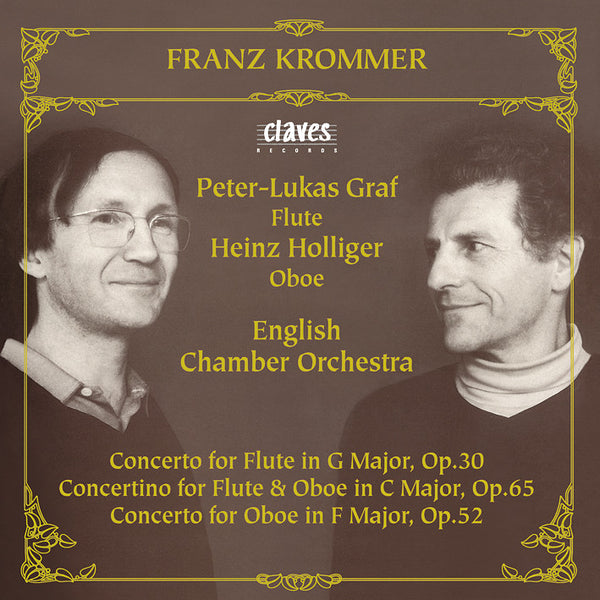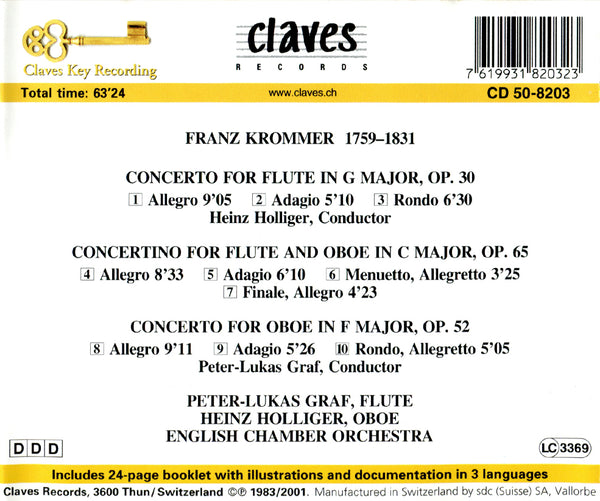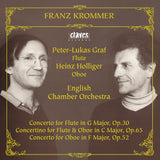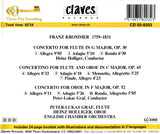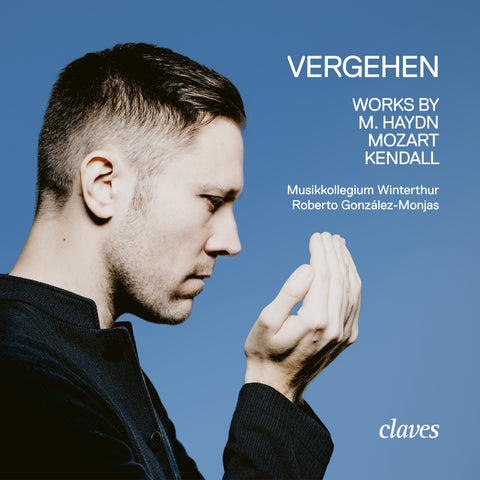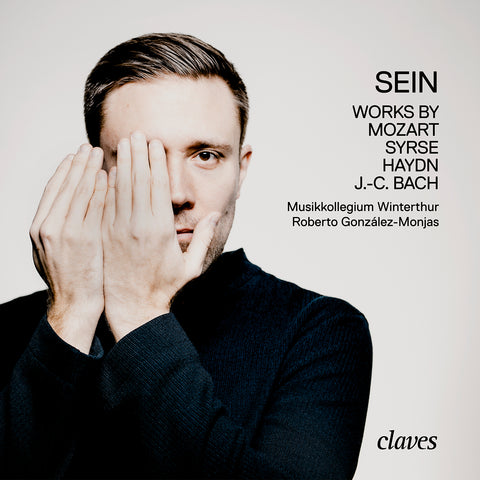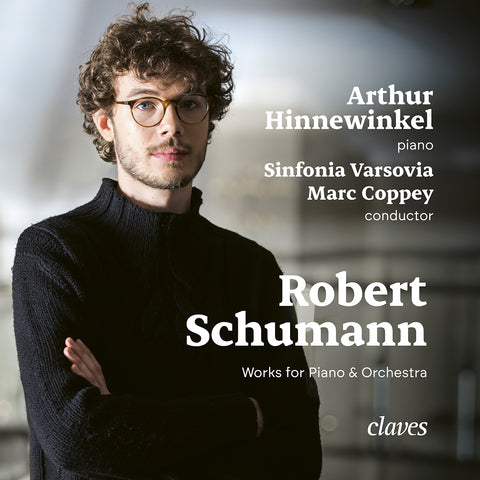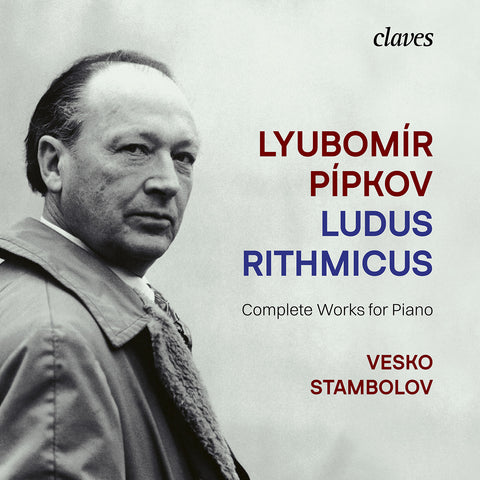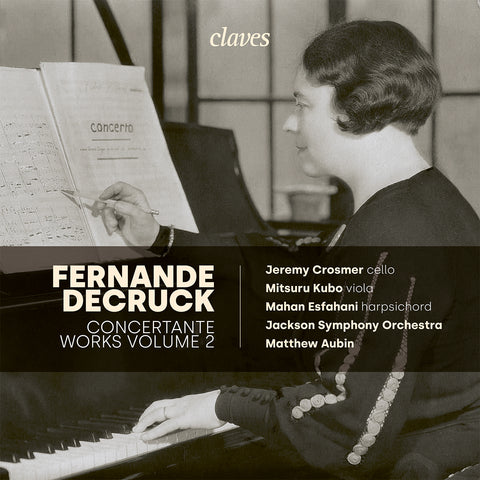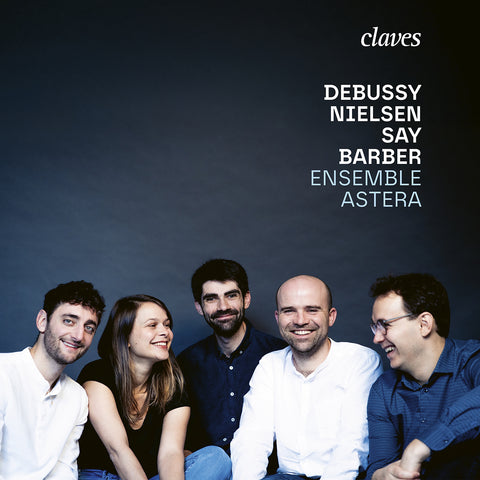(1983) Franz Krommer: Flute & Oboe Concertos
Category(ies): Concerto
Instrument(s): Flute Oboe
Main Composer: Franz Krommer
Orchestra: English Chamber Orchestra
CD set: 1
Catalog N°:
CD 8203
Release: 1983
EAN/UPC: 7619931820323
- UPC: 829410507769
This album is now on repressing. Pre-order it at a special price now.
CHF 18.50
This album is no longer available on CD.
This album has not been released yet. Pre-order it from now.
CHF 18.50
This album is no longer available on CD.
This album is no longer available on CD.
VAT included for Switzerland & UE
Free shipping
This album is now on repressing. Pre-order it at a special price now.
CHF 18.50
This album is no longer available on CD.
This album has not been released yet.
Pre-order it at a special price now.
CHF 18.50
This album is no longer available on CD.
This album is no longer available on CD.
FRANZ KROMMER: FLUTE & OBOE CONCERTOS
In 1815 he became Kammertürhüter to Franz I; this rather vague function obliged him to accompany the emperor on trips to Italy and France where many musical honors were bestowed on him. Three years later he succeeded his countryman Kozeluch as the last official Kammer-Kapellmeister and court composer, a position he held until his death in 1831.
Krommer primarily composed instrumental music. Spaun wrote that his symphonies “were very popular among young people because of their sprightliness.” The growing demand for music in which soloists could demonstrate their virtuosity led to the appearance of a large number of instrumental concertos at the beginning of the 19th century, a genre to which Krommer contributed many beautiful compositions.
They all follow to extent the model of Viotti’s violin concertos. Krommer’s concertos for wind instruments (with one more soloists) are particularly interesting because they reveal his intense interest in contemporary musical trends.
The Concerto for Flute in G Major, Op. 30 was printed in 1802 but probably penned some years earlier. It provides the soloist with many opportunities to demonstrate his brilliance and virtuosity, whether in the lively themes and sparkling runs of the first movement, in the simple but elegantly embroidered melodic lines of the Adagio, or in the elaborate figuration of the playful and gay Rondo.
Krommer was a prolific composer of chamber music; his string quartets, of which there are some one hundred, were particularly successful. Twenty years after his death W.H. Riehl referred to him as a “grand encyclopedia of the string quartet, a composer who not only lived to see the development of chamber music from Haydn to Spohr, but who incorporated all these developments in his own compositions with remarkable versatility”.
The recent discovered Concertino for Flute and Oboe in C Major, Op. 65 with string accompaniments is an arrangement by Krommer himself of one of his early string quartets (op. 26), which accounts for its wonderfully intimate character. Haydn’s influence is clearly evident in the greater melodic and rhythmic independence of the individual parts, in the division of melodic lines between different instruments, in fugato passages, and in witty shifts of meter in both the Menuett and Trio.
The Concerto for Oboe in F Major, Op. 52, printed in 1805, is very romantic in character. Krommer expanded the orchestra and gave it more importance. The virtuoso passages of the fast movements are less dominant and better integrated into the thematic structure. The pathos of the Adagio, with its sinister tapping, bold dissonances and dramatic contrasts, is reminiscent of Beethoven. Unexpected changes in key and mood also occur in the Rondo. Although Beethoven showed little interest in Krommer’s music (some similar traits might even have irritated him), its temperately modern and accessible style helped prepare the way for Beethoven’s startling new music.
Verena Weibel-Trachsler
(1983) Franz Krommer: Flute & Oboe Concertos - CD 8203
Born in Moravia in 1759, Franz Krommer was trained as a violinist and organist. Relatively late in his carrier, in 1975, he settled in Vienna as a violin teacher, but he quickly earned a reputation as a composer, which is evident by the large number of his works published at the time.
In 1815 he became Kammertürhüter to Franz I; this rather vague function obliged him to accompany the emperor on trips to Italy and France where many musical honors were bestowed on him. Three years later he succeeded his countryman Kozeluch as the last official Kammer-Kapellmeister and court composer, a position he held until his death in 1831.
Krommer primarily composed instrumental music. Spaun wrote that his symphonies “were very popular among young people because of their sprightliness.” The growing demand for music in which soloists could demonstrate their virtuosity led to the appearance of a large number of instrumental concertos at the beginning of the 19th century, a genre to which Krommer contributed many beautiful compositions.
They all follow to extent the model of Viotti’s violin concertos. Krommer’s concertos for wind instruments (with one more soloists) are particularly interesting because they reveal his intense interest in contemporary musical trends.
The Concerto for Flute in G Major, Op. 30 was printed in 1802 but probably penned some years earlier. It provides the soloist with many opportunities to demonstrate his brilliance and virtuosity, whether in the lively themes and sparkling runs of the first movement, in the simple but elegantly embroidered melodic lines of the Adagio, or in the elaborate figuration of the playful and gay Rondo.
Krommer was a prolific composer of chamber music; his string quartets, of which there are some one hundred, were particularly successful. Twenty years after his death W.H. Riehl referred to him as a “grand encyclopedia of the string quartet, a composer who not only lived to see the development of chamber music from Haydn to Spohr, but who incorporated all these developments in his own compositions with remarkable versatility”.
The recent discovered Concertino for Flute and Oboe in C Major, Op. 65 with string accompaniments is an arrangement by Krommer himself of one of his early string quartets (op. 26), which accounts for its wonderfully intimate character. Haydn’s influence is clearly evident in the greater melodic and rhythmic independence of the individual parts, in the division of melodic lines between different instruments, in fugato passages, and in witty shifts of meter in both the Menuett and Trio.
The Concerto for Oboe in F Major, Op. 52, printed in 1805, is very romantic in character. Krommer expanded the orchestra and gave it more importance. The virtuoso passages of the fast movements are less dominant and better integrated into the thematic structure. The pathos of the Adagio, with its sinister tapping, bold dissonances and dramatic contrasts, is reminiscent of Beethoven. Unexpected changes in key and mood also occur in the Rondo. Although Beethoven showed little interest in Krommer’s music (some similar traits might even have irritated him), its temperately modern and accessible style helped prepare the way for Beethoven’s startling new music.
Verena Weibel-Trachsler
Return to the album | Composer(s): Franz Krommer | Main Artist: Peter-Lukas Graf






